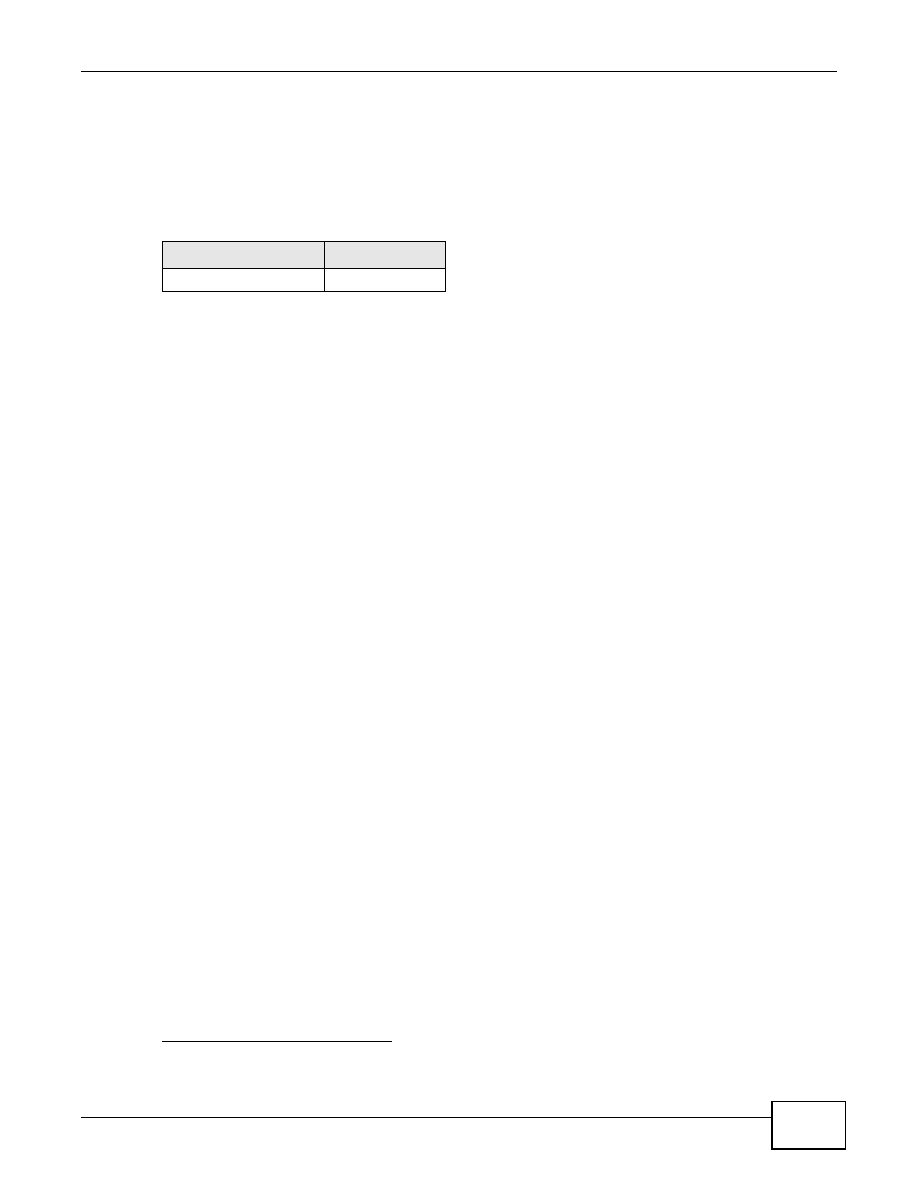
Chapter 7 Interfaces
ZyWALL 110/310/1100 Series User’s Guide
173
In the example above, if the ZyWALL gets a packet with a destination address of 5.5.5.5, it might
not find any entries in the routing table. In this case, the packet is dropped. However, if there is a
default router to which the ZyWALL should send this packet, you can specify it as a gateway in one
of the interfaces. For example, if there is a default router at 200.200.200.100, you can create a
gateway at 200.200.200.100 on ge2. In this case, the ZyWALL creates the following entry in the
routing table.
The gateway is an optional setting for each interface. If there is more than one gateway, the
ZyWALL uses the gateway with the lowest metric, or cost. If two or more gateways have the same
metric, the ZyWALL uses the one that was set up first (the first entry in the routing table). In
PPPoE/PPTP interfaces, the other computer is the gateway for the interface by default. In this case,
you should specify the metric.
If the interface gets its IP address and subnet mask from a DHCP server, the DHCP server also
specifies the gateway, if any.
Interface Parameters
The ZyWALL restricts the amount of traffic into and out of the ZyWALL through each interface.
• Egress bandwidth sets the amount of traffic the ZyWALL sends out through the interface to the
network.
• Ingress bandwidth sets the amount of traffic the ZyWALL allows in through the interface from the
network.
2
If you set the bandwidth restrictions very high, you effectively remove the restrictions.
The ZyWALL also restricts the size of each data packet. The maximum number of bytes in each
packet is called the maximum transmission unit (MTU). If a packet is larger than the MTU, the
ZyWALL divides it into smaller fragments. Each fragment is sent separately, and the original packet
is re-assembled later. The smaller the MTU, the more fragments sent, and the more work required
to re-assemble packets correctly. On the other hand, some communication channels, such as
Ethernet over ATM, might not be able to handle large data packets.
DHCP Settings
Dynamic Host Configuration Protocol (DHCP, RFC 2131, RFC 2132) provides a way to automatically
set up and maintain IP addresses, subnet masks, gateways, and some network information (such
as the IP addresses of DNS servers) on computers in the network. This reduces the amount of
manual configuration you have to do and usually uses available IP addresses more efficiently.
In DHCP, every network has at least one DHCP server. When a computer (a DHCP client) joins the
network, it submits a DHCP request. The DHCP servers get the request; assign an IP address; and
provide the IP address, subnet mask, gateway, and available network information to the DHCP
client. When the DHCP client leaves the network, the DHCP servers can assign its IP address to
another DHCP client.
Table 61
Example: Routing Table Entry for a Gateway
IP ADDRESS(ES)
DESTINATION
0.0.0.0/0
200.200.200.100
2.
At the time of writing, the ZyWALL does not support ingress bandwidth management.































































































































































































































































































































































































































































































































































































